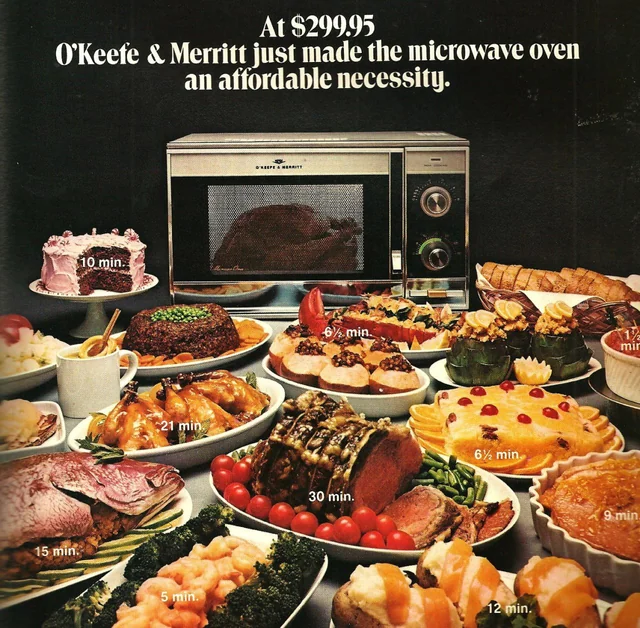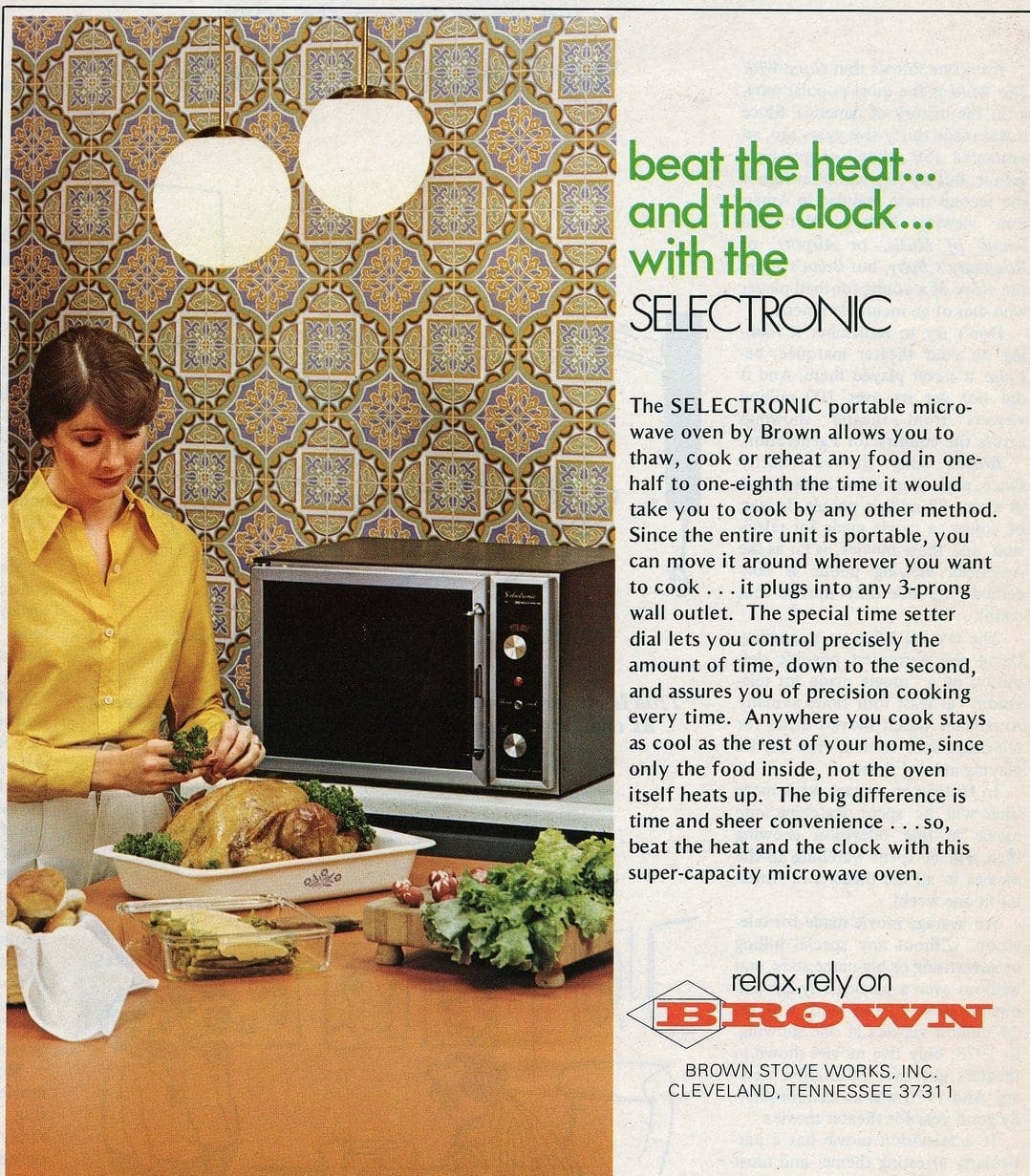Generative AI and the Microwave
Introduction
Things are different now, I think that is the one thing we can all agree upon. Since the “November moment”, of which today is the anniversary, things have really taken a turn. Everyone - whether it’s practitioners in industry or the general public - everyone seems to now be talking about, or at least thinking about, so-called “AI” or artificial intelligence.
There is a lot of hype right now. A lot of vapor. New research and products and startups and frameworks and whitepapers and blog posts are all being put out there at such a pace that it’s becoming difficult to keep up, even on a daily basis. I’ve seen and heard many other people note this fact. On social media. During presentations. In conversation.
Gartner has confirmed it, with their placing generative AI squarely at the peak of the hype cycle. Something I noted in a recent presentation of mine, and a fact I like to regularly remind other folks about. As one of my colleagues observed over dinner last week, we’ve reached the point where GenAI has become like teenage sex: everyone talks about it, nobody really knows how to do it, everyone thinks everyone else is doing it, and so everyone claims they are doing it.
So naturally, as someone “in the space”, I get asked questions like these a lot:
- What’s your take on all this?
- What do you think the future will look like?
- Are large language models here to stay?
- Is generative AI going to take my job?
And lately, all of this brings my thoughts squarely back to one invention, or more specifically, the marketing for one invention, and more specifically still, a TV commercial I vividly remember from my childhood for said invention: the microwave.
The Microwave and Product Niche
The commercial I remember so vividly goes something like this:
The scene opens with a wide shot of a massive stone manor on a fancy estate, then one of the interior, in the dining room. A long wooden table is lit only by candlelight. We see a butler, ready to serve dinner to the master of the estate, leave the room and the camera follow him back to the kitchen of the manor, where retrieves a giant platter on which to serve the elegant meal. He moves to a different part of the kitchen where we see and hear, with lit interior and buzzing hum, a microwave with a giant Thanksgiving turkey being cooked inside. The butler retrieves the turkey and serves it to the waiting owner of the estate and his dinner guests.
Cut to a final product shot of the microwave on a table surrounded by food, with company branding overlaid, and voiceover that says something to the effect of “Microwave Brand X: cooking elevated, only the best for the best.”
And now that you’ve read that, I ask you: what’s wrong with this picture?
I’m not sure whether that commercial really exists. I’ve tried and tried to find it online without success, so it’s possible I may have misremembered it. The closest thing I can find is this ad from the late 70’s for a Kenmore microwave which shows it defrosting and cooking a whole turkey.
Now take a look at this ad below for a microwave from the early days. What do you notice? Today, would you cook a roast in the microwave? How about a fish? Or a stuffed lobster?

No, you probably wouldn’t. The point is, that cooking a Thanksgiving dinner (or a roast) with a microwave now seems like a ridiculous thing to do. Because we all know that microwaves are actually pretty bad at cooking a wide variety of foods, because they cook food a certain way, very different from the way an oven cooks. They’ve now been relegated to a certain niche, and are marketed a certain way. But that wasn’t the case when they first came out; when they were new, they marketed almost as a replacement for the oven, a high-tech device that could cook anything and everything and was better because it was newer.
It took a while for the average consumer to realize that, no, the microwave was not a replacement for the oven, despite what they’d been promised. And that there are a number of things the oven can do - like browning food or cooking with metal dishes - that the microwave cannot.
See where I’m going with this?
Words Have Power
I want to talk about another aspect of all of the hype we are experiencing lately, and that is the power and loaded nature of language. And here I’m not talking about language in terms of it as the data that LLMs consume, but in the everyday way in which we use it, and how it shapes our thoughts and behaviors.
Something most people know about the microwave is that there were - and, at least by some individuals, still are - a lot of concerns about its safety as a technology. I remember hearing as a kid about how microwaves killed brain cells, and of course, the urban legend about the old woman who tries to dry her poodle in one with horrific results. In the early days, there was a certain amount of fear about this magical new device and how exactly it functioned with its invisible radiation. Think about the misnomer “nuke” and how it arose as to be used as a verb and slang term for microwaving something.
Yes, people tend to fear things they don’t understand. But there’s also more going on here. Perhaps you are familiar with the meme about asking people if they would drink di-hydrogen monoxide? Or that if you asked, 9 out of 10 people would refuse to eat food that was bombarded with infrared radiation. But, of course, this is just the scientific name for what we colloquially refer to as heat, and is how your oven cooks.

Lastly, I remember very early in my career working with scientists who had to transport an atomic clock, including through airports and airport security. While doing so is absolutely and totally 100% legal and safe, they were nonetheless told to never, under any circumstances, use words like “atomic”, “atom”, or “nuclear” when describing the clock, as I’m sure you can imagine why.
Words have power. Language is loaded. So we need to be careful. I’m not the only one that thinks perhaps using a term like “artificial intelligence” to describe the glorified eloquent search engines that have set the world abuzz is not the best idea. That it is at best misguided, and at worst, dishonest and misleading. I personally think researchers and leaders in the space should not be using words like “thinking”, “reasoning”, “thoughts”, and “knowledge” when describing LLMs.
Using these types of words is a kind of leading the witness, if you will, and it’s not helping anyone. It’s irresponsible for people in positions of power and influence - especially those who obviously know better - to be talking about the “existential threats posed to humanity” by AI, which is, quite frankly, a load of bullshit. A language model is not going to turn into Skynet anymore than the autocomplete in your word processor is going to steal your identity and go online shopping with your credit cards. Whether these people actually believe what they are saying, or are just saying it for media attention and know it to be obviously untrue, is something difficult to ascertain. At the end of the day, it doesn’t really matter - either way, they shouldn’t be saying these things on public stages in such a public way.
The point is, that we need to be careful with our language, and that we need to do a better job of educating those that don’t know about “AI” on what it is, and what it can and cannot do. Because words are very powerful, so much so that something that can use them may be mistaken for intelligent, and something which is intelligent that cannot may be mistaken as the opposite. If you can get past the politics and occasional curse word, this point is very eloquently illustrated in this blog post here, on how language is a poor heuristic for intelligence.
A Microwave in Every Home
So what has become of the saga of the microwave, and what do I think will become of generative AI?
Well, as you probably already know, the microwave didn’t replace the oven. But it still found its niche. It’s very, very good at doing certain things like reheating and defrosting food. So much so that entirely new kinds of products were developed around it. And, of course, it now serves as an essential supplementary part of nearly every modern kitchen worldwide.

Such will be the fate of generative AI, I think. The dust will eventually settle. The vapor will dissipate. As someone observed earlier to me earlier this year: “One day we’ll view using LLMs with all the awe and wonder of running SELECT * on a database.” Generative AI will find its place, and will be integrated into the products and services we already use in ways that make sense. Organizations will do the work to integrate it, as they already are, and consumers will tell them what they actually want, and what does and doesn’t work. Generative AI will find its niche.
And it’s for the better. It’s just a matter of time until we’re on to the next shiny new thing. Just try not to get too caught up in the hype, and remember to focus on what’s important: how things actually work, why they are useful, and how they can make our lives and the work we do better.
Thanks for reading. This article was 0% written by generative AI 👍 If you enjoyed this post, please feel free to connect with me on LinkedIn, or check out one of my workshops at NLP from scratch.
